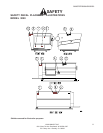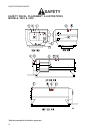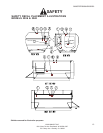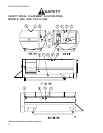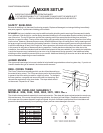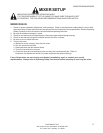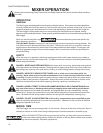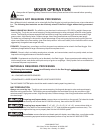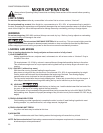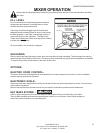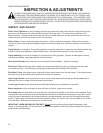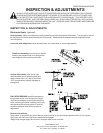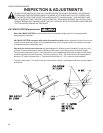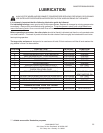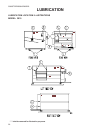
19
3000STOPR005810R082503
KUHN KNIGHT INC.
1501 West 7th Ave. Brodhead, WI 53520-0167
701 Cherry Ave. Greeley, Co. 80632
MATERIALS NOT REQUIRING PROCESSING
Many different kinds of materials can be mixed with the Reel Auggie, but each type has its own unique characteris-
tics. The following feed materials can be efficiently mixed in the Reel Auggie without being processed
first :
SMALL SQUARE HAY BALES- Dry alfalfa hay can be mixed in rations up to 15%-20% by weight. Always use
cured dry hay, Tough hay can cause wrapping, binding and damage to mixer, adversely effect the mixing perfor-
mance. The following are some examples that contribute to tough hay conditions: High moisture content, High
grass content, High density bales, Outdoor storage, Use of hay preservatives and Excessive stem length.
For better hay processing in rations with a higher percentage of hay mixing may be improved by pulling the non-
wiper cross tubes to the inner setting, (see mixer setup section “reel cross tubes”) this will allow the reel to more
aggressively charge the lower auger with hay.
FORAGES- Chopped hay, corn silage, and finely chopped crop residue can be mixed in the Reel Auggie. Wet
and heavy forages added in large volumes may require more power to mix.
GRAINS- Ground, rolled, and whole cereal grains, minerals, and concentrates, are all very easily mixed, and can
improve the mixing performance of the other materials.
LIQUIDS- Supplements and liquid fat can be blended in the Reel Auggie. Some operators prefer adding liquids
into the empty mixer, and others add liquids on top of grains or roughage. Sticky liquids such as molasses tend
to increase the power requirements.
MATERIALS REQUIRING PROCESSING
The following feed materials cannot be efficiently mixed in the Reel Auggie unless they have been
broken apart or processed:
-ALL LONG AND UNCURED GRASSES
-ROUND BALED, LARGE SQUARE BALED, OR STACKED FEEDS
The HAY MAXX SYSTEM option should be used to assist in tearing apart long stem hay.
HAY PREPARATION
Always use cured dry hay. Tough hay can cause wrapping, binding and damage to mixer and can adversely
effect the mixing performance. The following are some examples that contribute to tough hay conditions: High
moisture content, High grass content, High density bales, Outdoor storage, Use of hay preservatives and Exces-
sive stem length.
Preparing small square bales- remove twine or wires while on the ground. Put bales into loader
bucket lengthwise so that they will fall onto the HAY MAXX uniformly, then add to the HAY MAXX.
Preparing large square bales (3’ x 3’ x 8’), (3’ x 4’ x 8’), (4’ x 4’ x 8’)- remove twine while on
the ground. Put slabs of the bale into the loader bucket (10”-12” total thickness suggested maximum size). The
hay should lay flat against the hay pan to properly feed into the HAY MAXX system.
Round bales- remove the twine and break apart with loader, round bale slicer, round bale unroller
or other round bale processing equipment and load separated portions of hay into the HAY MAXX SYSTEM.
Always refer to Operating Safety Precautions and Safety Decal sections of this manual before operating
this mixer.
MIXER OPERATION



